UWI visual arts student finds peace in Hindu art
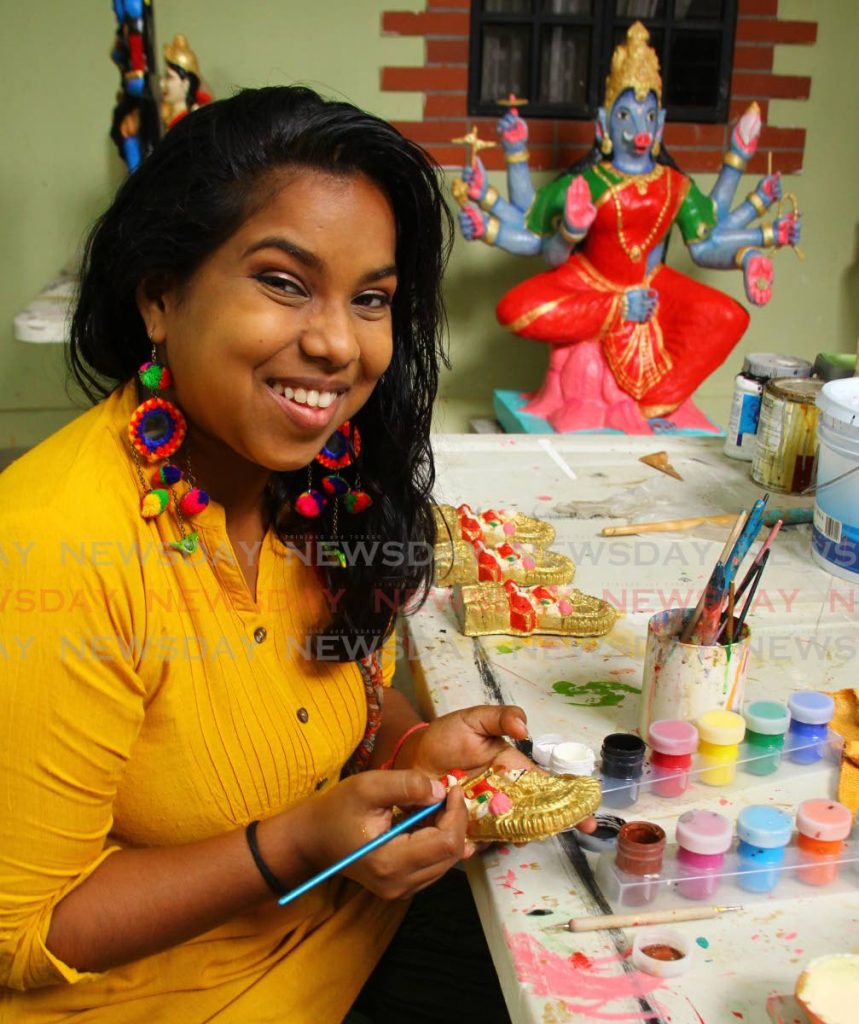
Kajal Madho began painting religious iconography around age ten but only felt confident enough to share her work with the world about two years ago.
The 26-year-old painter and sculptor said as a child she painted beaches, trees, houses and other typical fare for pre-teens. She also loved creating animals with plasticine.
However, one day, her father bought her a colouring book with images of various gods and goddesses in Hinduism and she was intrigued. She started drawing them and, while drawing, felt a sense of calm and peace as if she were doing what she was supposed to. She later advanced to painting them.
“I grew up in a Hindu household, and I’m still here, and it had a huge impact on me as an artist. I would have experienced a certain transcendence when going to temple with my mom and siblings, even doing our prayers at home.”
She found joy dressing in Indian wear, going to prayers, picking flowers, lighting deyas and other aspects of her life and so her art gravitated towards Hinduism and Indian culture in general.
For six years she was an only child and most of her family were adults so she spent a lot of time by herself. She would watch Indian movies for hours and see scenes set in temples and they made her gravitate more to the religion.
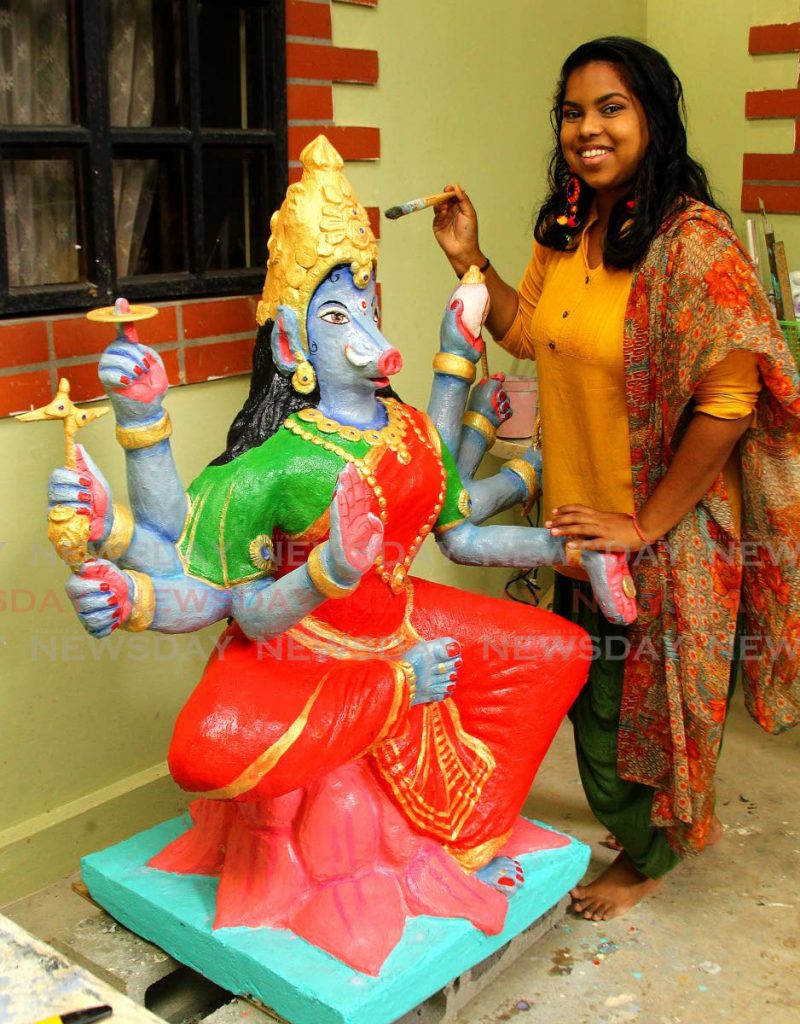
“I realised a lot of stuff was different from what we do in Trinidad and realised there was a lot to explore in Hinduism. So I started reading. I was around 11 or 12 when we got internet and the first thing I remember researching was a question that bothered me growing up about the origin of a god and a goddess.”
Despite her inclination towards creating Hindu art, from a young age she noticed a lot of Caribbean art was Afro-centric while Indian art was mostly seen as craft rather than fine art.
“And even the artwork that makes it internationally, has not a tinge of Indian-ness to suggest a multi-cultural society. Then there are local Indian artists who don’t do Indian artwork because they think it’s not going to sell.”
Therefore, even though she was a spiritual person, she hid that aspect of herself and her art. She wanted to fit in, so only showed what she thought people would want to see like scenery, buildings, and landscapes.
While she continued to create Hindu-themed paintings, she only displayed them in school competitions at Lakshmi Girls' Hindu College, when she gives them as gifts, and later on a Facebook page that was not linked to her in any way.
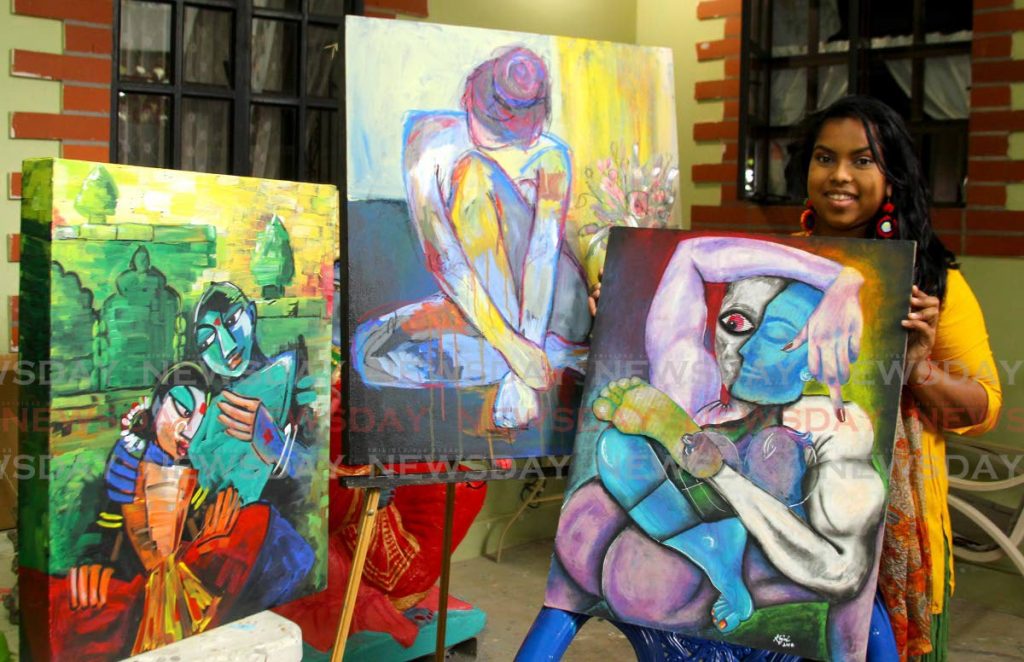
Also holding her back was the fact that she was not open to being an artist because being a doctor, lawyer, engineer or having a similar career were the paths she was expected to walk. So, she did a degree in business management studies at the University of the West Indies. But, after graduating, she could not get a job, so she decided to study art.
She is now in her final year of a visual arts degree at UWI.
However, it all changed for her two years ago when a lecturer assigned the students to do a piece on personal identity. She did not want to be “ that stereotypical Indian girl” to do Indian dance, art, mehindi and other activities people relate to being Indian so she created a “conceptual sculpture.”
When Madho presented the piece her lecturer could tell she was not invested in it and told her the work was not representative of who she was. The lecturer told her Indian art was part of her identity and encouraged her to accept it.
“That was a turning point for me and I actually started to embrace murti-making, which was something I never thought people would look forward to seeing. Slowly I’m learning to love myself for who I am, and the kind of artwork I produce.”
Now she does contemporary and conceptual art with themes of Indian identity and culture, including gods. However, most of her work was creating and restoring murtis.
Madho, who lives at Carlsen Field, Chaguanas, began making murtis about seven years ago.
She saw a news broadcast of the Ganesh Utsav celebration where Hindus make a dirt Ganesh, worship him for five to ten days and then submerge the murti in a river or sea. She wanted to make her own Ganesh, and did so.
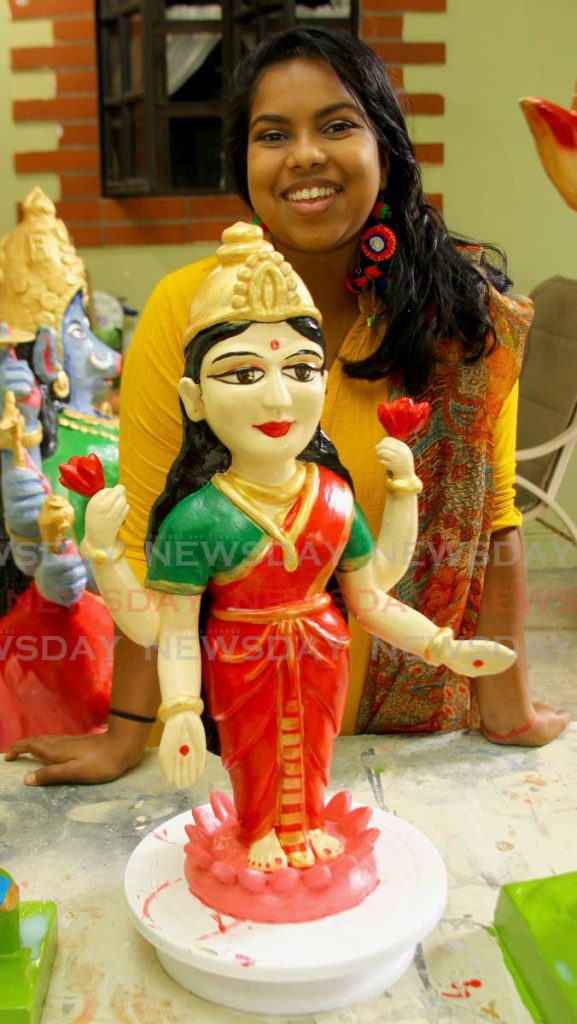
Every year, Madho makes a clay Ganesh murti for her use, and one year she posted a photo of one on her social media accounts. Many people loved it and the next year five murtis were ordered.
She created the Facebook page, The Murti Maker, and posted her creations there since, at the time, she did not want it associated with her art. But the page kept growing and every year the number of orders increased. She also started creating larger sized clay murtis for temples, as well as concrete murtis.
In her opinion, many murtis crafted in TT lacked details and features. And while there were a few local murti makers that brought out the divinity in the murtis they created, many did not, so her aim was to revive the practice.
“If you compare those with murtis in India, they are so vastly different because of the kind of detail work on the murtis. They have this distinct look about them like you know it’s not a human being but some celestial being that can be associated with God. But in Trinidad we recognise them because their features are like ours.”
When asked to make a murti, Madho would research the god or goddess and consult her godfather, a pundit, to create it as accurately as possible as she did not want repercussions from Hindu organisations – or the gods.
In addition to Hindu gods and goddesses, she made statues from other religions. For example, she recently worked on the Christian images of Jesus Christ and the Virgin Mary, as well as Obatala from the Orisha faith.
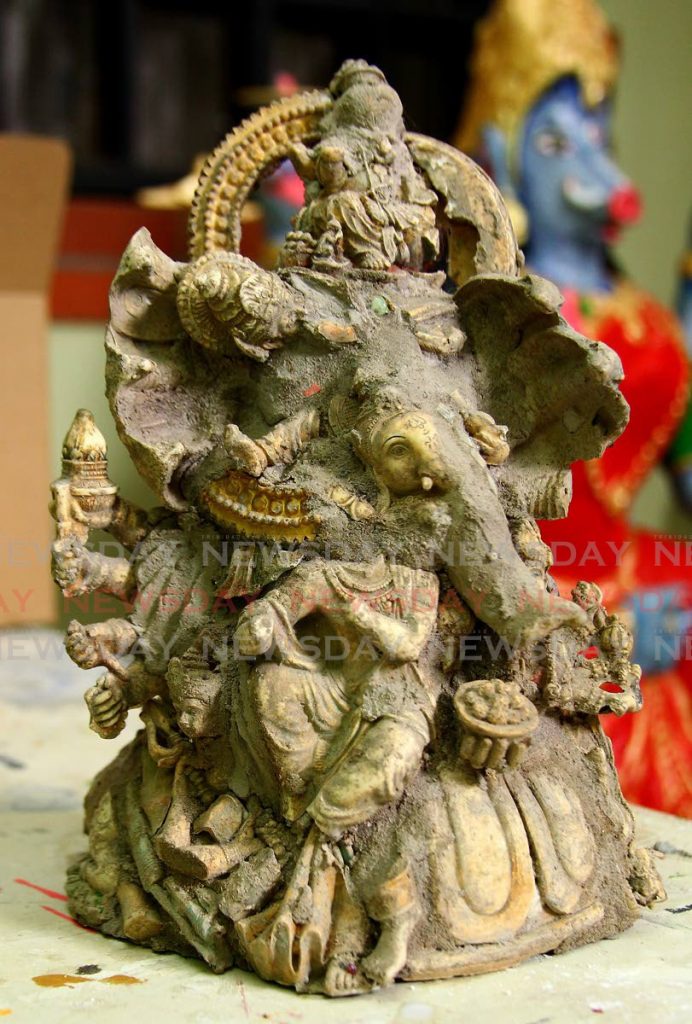
Fragmented God – a piece which Kajal Madho made from discarded murtis found at the Temple of Sea, Waterloo. -
Upon gaining a commission, she would read up on the one to depict, ask those knowledgeable on the topic, consult with her customers and incorporate their needs with her research. She said she did not want to make errors with people’s religious images as it was something they would worship.
“I love the thrill of seeing something in nothing and revealing it to other people. There is always this feeling of euphoria and pride to do something like this.”
Personally though, Madho felt a connection with the goddess Durga, the symbol of strength, courage, feminine energy and independence.
“Praying to her would have fostered a lot of self-care and self-love, and gave me the drive to become a small business owner and break away from generational expectations of getting married to a rich husband, or getting a job and fitting into the norm.”
Divali is also a significant festival for her. She explained the festival is five days long and the third day is celebrated in TT. On that day, Lord Ram, his wife Sita and brother Lakshman returned to their homeland of Ayodhya after 14 years in exile. It is also the day Mother Lakshmi emerged from the milky ocean.
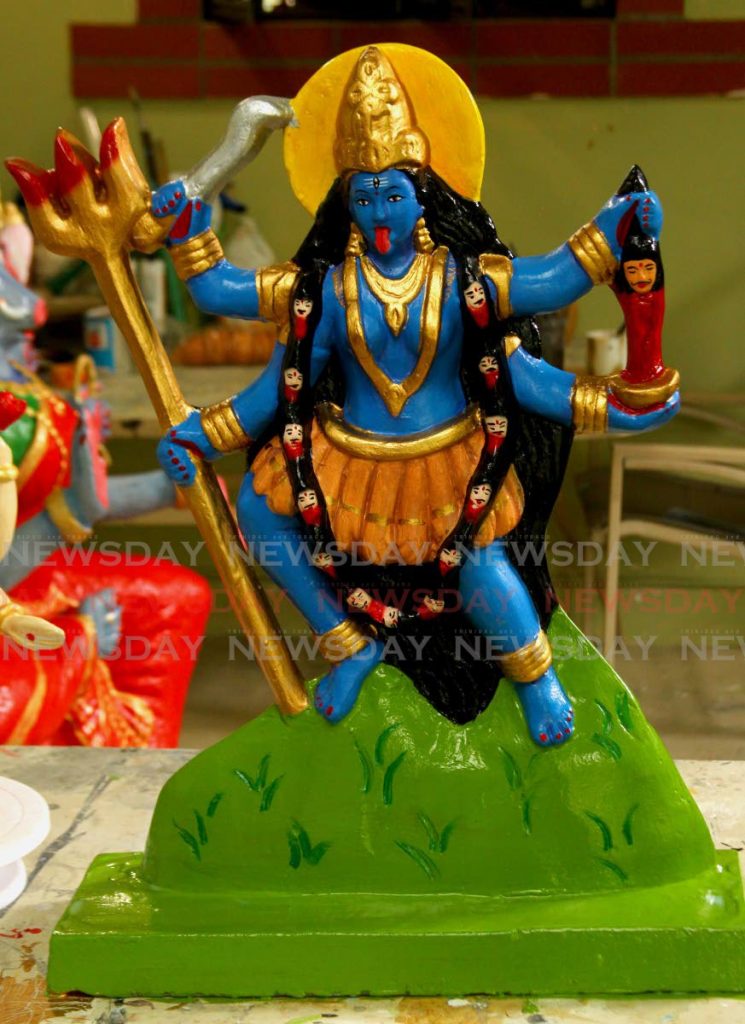
“Growing up, if you didn’t celebrate any other Hindu festival, this is the festival you celebrate. I would look forward to cleaning, doing the prayers, and lighting the deyas. All these things would have fostered a sense of identity in me that would, later on, influence the type of artwork I do. My love for Hinduism would have partially come from the rituals of Divali.”


Comments
"UWI visual arts student finds peace in Hindu art"